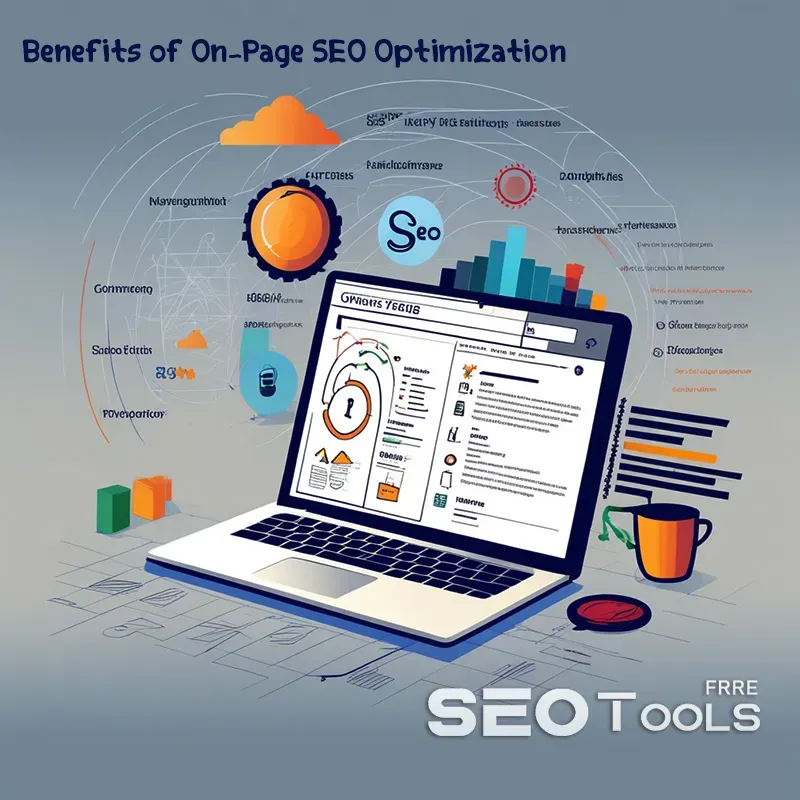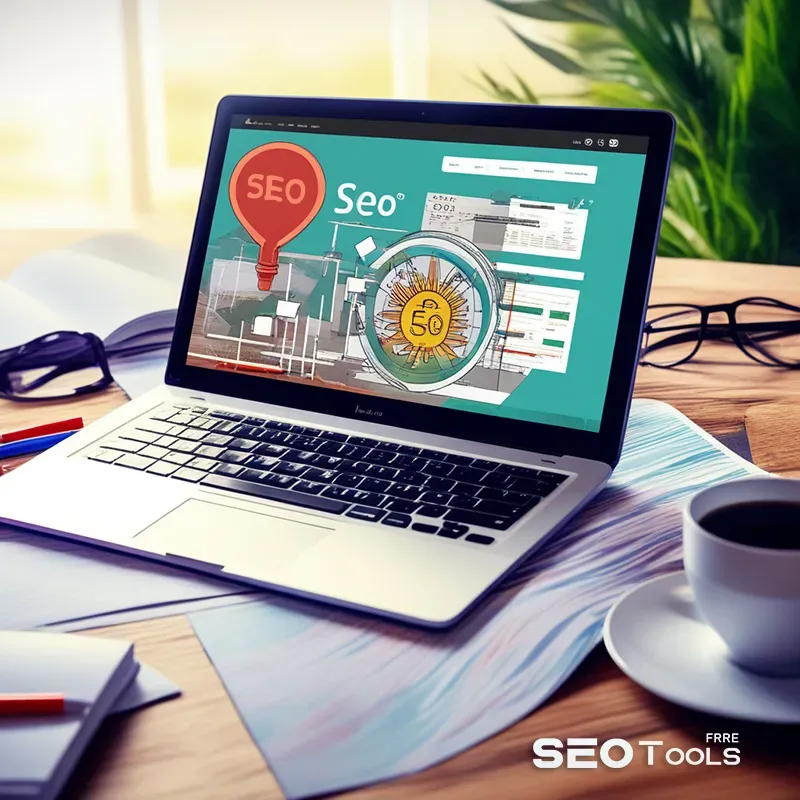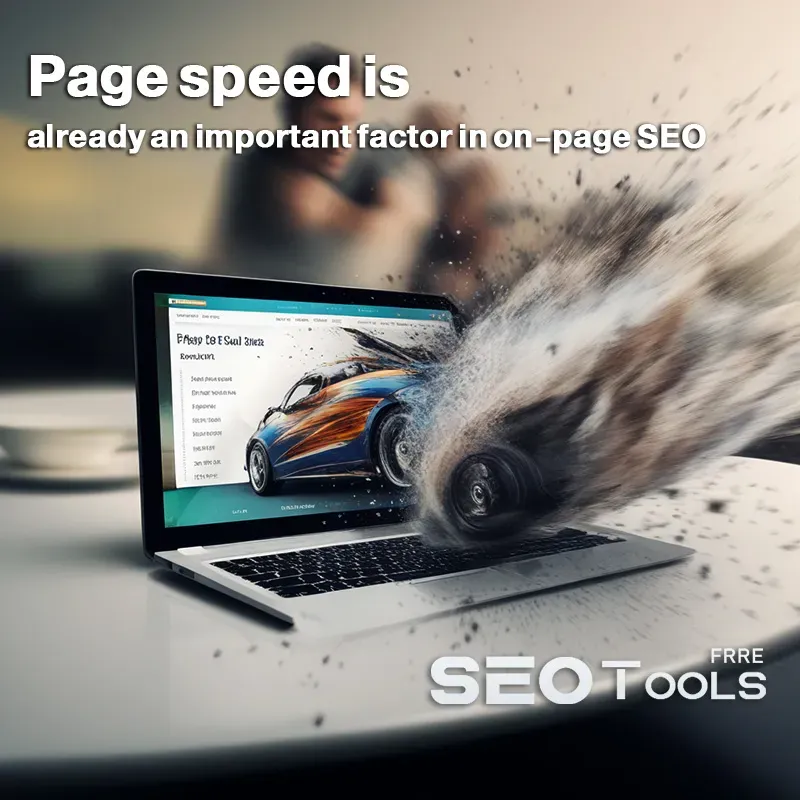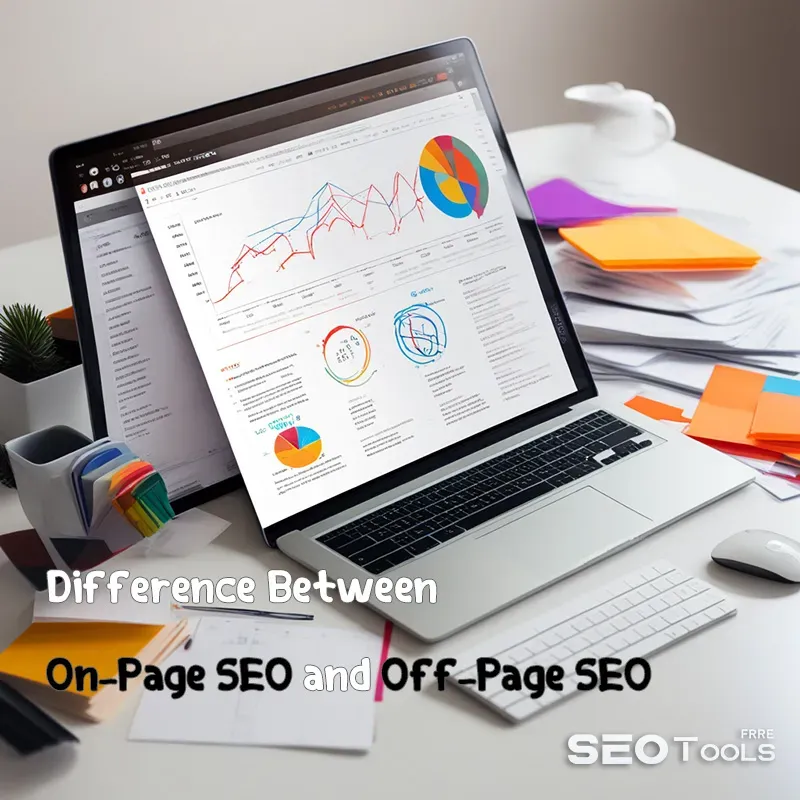This guide provides a comprehensive overview of on-page SEO. It covers not only the definition but also delves into how it works, its significance, and actionable strategies to enhance on-page search engine optimization for your website.
By the end, you'll grasp the concept and be equipped to boost keyword rankings and drive more traffic to your site through effective on-page SEO techniques.
On-Page SEO
What Is On-Page SEO?
On-page SEO, also known as on-site SEO, involves optimizing web pages with targeted keywords to enhance search engine visibility and drive more traffic. It encompasses various elements such as page titles, meta tags, URL structure, headings, body content, images, and more.
Understanding the importance of on-page optimization is crucial. By implementing this SEO strategy, you can reap numerous benefits such as improved search rankings, increased organic traffic, enhanced user experience, higher click-through rates, and better conversion rates. Harness the power of on-page SEO to unlock the full potential of your website and achieve your online goals.
Why Is On-Page SEO Important?
The significance of on-page SEO lies in its ability to facilitate search engine comprehension of your website and its content. By optimizing your pages effectively, you make it easier for search engines to match your content with relevant search queries. This, in turn, enhances your chances of achieving higher rankings and greater visibility in search engine results.
When search engines like Google crawl your website, they consider various factors on each page and calculate a ranking score for specific keywords. As discussed in my article on SEO content writing, proficient on-page optimization can substantially enhance your website's visibility in search results for the most pertinent keywords.
Benefits of On-Page SEO Optimization

1. Improved Keyword Rankings
The primary reason why on-page SEO holds significance is that it leads to improved keyword rankings in the search engine results pages (SERPs).
When your content is well-optimized for specific keywords, Google is more likely to match it with relevant search queries, increasing your visibility. For more information, refer to the related guide provided.
2. Increased Organic SEO Traffic
Another significant benefit of on-page SEO is the potential increase in organic search traffic. As your keyword rankings improve through effective optimization, your pages gain greater visibility in search engines, attracting more visitors from Google and other search engines. For further insights into this topic, please refer to my guide on the meaning of organic keywords.
3. Improved Local Search Results
On-page search engine optimization not only benefits general keyword traffic but also plays a crucial role in local SEO. By optimizing specific elements targeting your local area, you enhance the likelihood of your website being discovered in local search results.
Local SEO holds great significance for brick-and-mortar businesses aiming to expand their local customer base. Implementing on-page optimization strategies tailored to the local audience can significantly improve your business's visibility and attract more potential customers from your local area.
4. Boost In Click-Through Rate (CTR)
When on-page optimization is executed effectively, it can significantly enhance the click-through rate (CTR) of your search engine listings. Listings that include target keywords in key areas such as the meta title, meta description, and URL often attract a higher CTR compared to underoptimized listings.
Later in this guide, we will discuss the top areas where you can optimize for on-page SEO. It's important to note that well-optimized content has the potential to capture more clicks from the search engine results pages (SERPs). This can be a strategic advantage in outranking your competition.
Furthermore, employing SEO copywriting techniques can also boost the CTR of your pages. If you are unfamiliar with this concept, I recommend checking out my post on what SEO copywriting is to gain a better understanding.
5. Increased Conversion Rates
Once you comprehend the impact of on-page search engine optimization on improving your website's click-through rate (CTR), you may wonder how it influences conversion rates.
Well-optimized content for on-page SEO frequently leads to better conversion rates, generating more leads, customers, and sales. This is primarily due to the fact that users encounter various signals on the page that validate the relevance of the content to their search queries. In the absence of such optimization tactics, visitors may bounce from the page as it may not appear to be a suitable match for their search intent.
By implementing effective on-page optimization strategies, you can enhance the alignment between user intent and your content, creating a positive user experience that increases the likelihood of conversions.
6. Better User Experience
Google indeed favors content that provides a positive user experience and aligns with the search intent of users. When you execute on-page SEO correctly, your visitors are more likely to have an enjoyable experience on your pages.
This aspect complements the previously mentioned benefits since higher conversion rates indicate that your users are satisfied with your SEO content. To delve deeper into the importance of SEO content, I recommend referring to my guide on why SEO content is significant. It provides valuable insights into the role and significance of SEO content in driving favorable user experiences and achieving desired outcomes.
Inexpensive SEO Optimization Strategy
On-page SEO stands out as the most cost-effective optimization strategy for websites. If you undertake the optimization techniques yourself, it only requires your time and doesn't incur any financial costs.
In comparison to activities like building backlinks and running paid advertisements, on-page optimization consistently emerges as the more economical option. Therefore, if you seek the most cost-effective approach to search engine optimization, focusing on on-page SEO is the way to go. It allows you to optimize your website efficiently without the need for significant financial investments.
Higher ROI Than Paid Ads
Organic traffic, which is primarily driven by on-page optimization, plays a significant role in generating business revenue. In fact, approximately 40% of business revenue is attributed to organic traffic, which does not incur any direct financial costs.
When comparing the cost per conversion on different advertising networks, such as the Google Ads search network and display network, the average cost per conversion is $56.11 and $90.80, respectively.
As evident from these figures, organic SEO, largely influenced by on-page optimization, offers the highest return on investment (ROI) for businesses with a website. By investing in effective on-page optimization strategies, businesses can tap into the potential of organic traffic, which not only drives revenue but also provides a cost-effective means of acquiring conversions compared to paid advertising channels.
Unlike off-page SEO, where you have limited control over optimizations, on-page SEO provides easy management and updatability.
In fact, you have the flexibility to modify your on-page optimizations at any time and observe the impact on your rankings and traffic in response to Google's algorithms. If you achieve positive results, you can replicate those successful strategies on other pages of your website.
On the other hand, if you notice a drop in rankings due to the on-page updates, you can quickly reverse the changes and attempt to regain your previous rankings.
With off-page SEO, you must wait for Google to crawl the backlinks, evaluate their quality, and assign your page a new SEO score. This process can take several weeks to several months to assess the effects. In contrast, on-page SEO allows for more immediate adjustments and quicker measurement of outcomes.
More Brand Awareness
Another significant advantage of on-page SEO is the boost in brand awareness. Attaining higher rankings for your content enhances the visibility of your brand in search engines, thereby increasing its value in the eyes of potential customers.
It's no secret that brands with multiple pages ranking at the top of Google for niche-related queries enjoy greater brand equity compared to businesses appearing on page two or lower in the search engine results pages (SERPs).
Consequently, investing time and effort to understand how on-page SEO functions and implementing relevant methods to increase your site's exposure in search engines can yield significant dividends. This strategic approach not only drives organic traffic but also elevates brand recognition and establishes a stronger brand presence in the digital landscape.
How On-Page SEO Works?

On-page SEO functions by enhancing the relevance of a web page for specific keywords, leading to improved search engine visibility and traffic for those particular queries. To achieve effective on-page SEO, it is essential to optimize various on-site elements, including HTML tags, body content, images, and internal links.
According to Google's documentation on "How Search Works," one of the fundamental signals indicating information relevance is the presence of keywords that match the search query. If the keywords appear on the page, within headings, or in the body text, the information is more likely to be considered relevant.
Moreover, Google's algorithms prioritize reliable sources by assessing signals that determine expertise, authority, and trustworthiness on a given topic.
These statements imply that Google crawls websites, scanning each web page for on-page SEO elements to identify relevant keywords and evaluate the overall expertise, authority, and trustworthiness (E-A-T) on the topic. By comparing the content to other indexed pages, Google determines the page's relevance for specific queries and assigns a ranking position in the SERPs.
The work of on-page SEO plays a crucial role in increasing your site's rankings for the most important keywords relevant to your business.
What Factors Are Included In On-Page SEO?
When it comes to on-page SEO, there are several key factors to consider to optimize your content and enhance your rankings and organic visibility in search engines. The top on-page SEO factors include:
Meta Title Tag
The meta title tag plays a crucial role in on-page SEO as it serves as the main heading displayed for your listing on the search engine results page (SERP). It is an essential element to optimize for better keyword rankings.
By including relevant keywords in the meta title tag for each page, you provide clear signals to search engine crawlers about the content's topic and improve its chances of ranking appropriately in search results.
Optimizing the meta title tag involves crafting concise, descriptive, and keyword-rich titles that accurately reflect the content of the page. This helps search engines understand the relevance of your page to specific queries, thereby increasing its visibility and potential click-through rates from users.
Meta Description
The meta description is a concise summary of a web page that appears below the meta title tag in the search engine results pages (SERPs). While it is not a direct ranking factor, it plays an important role in enticing users to click on your listing.
While search engines no longer consider the meta keywords tag for ranking purposes, it is still valuable to include relevant keywords in the meta description. When the keywords in the meta description match the user's query, they may be highlighted in bold, grabbing the user's attention and indicating the content's relevance.
However, it's important to note that the primary purpose of the meta description is to provide a compelling and informative summary of the page's content, encouraging users to click through to your website. Focus on crafting well-written meta descriptions that accurately represent the page and entice users to visit your site.
Regarding the meta keywords tag, major search engines no longer crawl or give it significant weight in determining rankings. It is no longer considered a relevant factor in modern SEO practices. For more information on this topic, you can refer to your post on what meta keywords are.
In summary, while the meta description is a valuable opportunity to include relevant keywords, its main purpose is to provide a compelling summary that attracts users to click on your listing in the SERPs. The meta keywords tag is no longer influential and can be disregarded in current SEO strategies.
Headings
Headings, also known as header tags, are HTML elements that provide structure and organization to the content on a web page.
There are different levels of headings, represented by the H1 to H6 tags.
The H1 tag holds significant importance in on-page SEO optimization. It is recommended to include your primary target keyword within the H1 tag, as it signals the main topic of the page.
Following the H1 tag, the H2 to H3 tags are also crucial for on-page SEO. These tags can be used to incorporate both your primary and secondary keywords, thereby enhancing the topical relevance of the content.
While the H4 to H6 tags are less significant than the H1 to H3 tags, you can still include keyword variations in these headings if desired. However, their impact on rankings is relatively lower compared to the primary headings.
Proper utilization of headings helps search engines understand the structure and hierarchy of your content. It also improves the user experience by providing a clear outline of the information on the page. By incorporating relevant keywords within the headings, you enhance the SEO optimization of your content and its relevance to targeted search queries.
URL
The URL, or Uniform Resource Locator, represents the address of a specific web page and appears in the address bar of a web browser. Optimizing your URLs can contribute to improving your on-page search engine optimization.
Including your target keywords in the URLs can enhance the relevance and clarity of your web page's content to both search engines and users. When search engines crawl and index your website, they analyze the URL structure as part of their ranking algorithm. Having keyword-rich URLs can provide additional signals and context about the page's topic.
When crafting SEO-friendly URLs, it is advisable to use descriptive, concise, and keyword-optimized phrases that accurately represent the content of the page. Avoid using generic or irrelevant characters, numbers, or parameters in your URLs, as they may not provide meaningful information to search engines or users.
By incorporating target keywords in your URLs, you can help search engines understand the topic and relevance of your web pages, ultimately improving your on-page SEO and increasing the visibility of your site in search engine results.
Page Content
The page content, which encompasses the main body of text and can include images, plays a crucial role in on-page SEO optimization. Optimizing the content is essential as it helps search engines like Google understand which queries the content should rank for.
To improve the topical relevance of your content, it is recommended to include your target keywords strategically throughout the page. Aim to incorporate them organically at least 3-4 times within the content.
However, optimizing page content goes beyond keyword usage. It is vital to ensure that the content aligns with the search intent of the visitor and demonstrates expertise, trust, and authority (E-A-T).
One effective approach is to provide comprehensive coverage of the topic on the page. Address relevant questions and provide thorough information related to the keyword phrase. This helps establish your authority on the subject matter.
Additionally, supporting your content with external links to reputable websites can strengthen its credibility. By referencing and citing other sources, you allow search engines to verify the information provided and enhance the trustworthiness of your content.
Remember, creating high-quality, informative, and authoritative content that meets the needs of users is a key aspect of successful on-page SEO optimization. By doing so, you increase the likelihood of ranking well in search engine results and providing valuable information to your audience.
Image Optimization
Image optimization involves several key elements: ALT text, filename, title attribute, and metadata. By incorporating relevant keywords into these fields, you can enhance on-page SEO and improve the topical relevance for the target queries you want your content to rank for.
ALT text: Provide a descriptive and keyword-rich alternative text for images. This helps search engines understand the content of the image.
Filename: Use descriptive filenames that include relevant keywords, rather than generic names. This provides additional context to search engines.
Title attribute: Add a concise and keyword-focused title attribute to images. This can contribute to better optimization and improve the understanding of image content.
Metadata: Include relevant keywords in the image's metadata, such as image title, caption, and description. This further reinforces the topical relevance of the image.
Internal linking
is the practice of connecting two pages within your website through hyperlinks. It benefits both user experience and search engine crawlers. Internal links expose users to more content on your site, improving navigation and engagement. They also assist search engine crawlers in discovering and indexing relevant pages.
Implementing a strong internal linking strategy is a simple yet effective on-page SEO approach. By using anchor text that contains keywords on your internal links, you can enhance the keyword relevance and topical authority of the linked page for those specific terms. This contributes to better overall optimization and can potentially boost rankings.
Structured Data
Structured Data, also known as Schema Markup, is a form of code that can be incorporated into web pages to provide additional context and meaning to search engines. It helps search engines better understand the content and can enhance the display of rich results in the search engine results pages (SERPs).
By implementing Structured Data elements on your pages, you can increase the likelihood of your content being featured in rich results, such as product reviews, recipe details, or image carousels. These rich results provide additional visibility and can attract more attention from users.
Adding Schema Markup to your website is a beneficial on-page SEO practice, as it helps search engines interpret and present your content more effectively, potentially leading to improved rankings and click-through rates.
Page Speed

Page speed is indeed an important factor in on-page SEO optimization. Google considers the loading speed of web pages as a ranking factor and prioritizes fast-loading sites in its search results. A slow-loading page can negatively impact user experience and increase bounce rates, leading to lower rankings.
To improve page speed, it is essential to optimize various aspects of your website, including:
Minimize file sizes: Compress images, CSS, and JavaScript files to reduce their size and improve loading times.
Enable browser caching: Utilize caching techniques to store certain elements of your website on a user's device, allowing for faster subsequent visits.
Reduce server response time: Ensure that your web server responds quickly to user requests to minimize latency.
Optimize code and scripts: Remove unnecessary code, minimize redirects, and optimize your HTML, CSS, and JavaScript to streamline the page loading process.
Use a content delivery network (CDN): Distribute your website's content across multiple servers located in different geographical regions to deliver it faster to users worldwide.
By prioritizing page speed optimization, you can provide a better user experience, reduce bounce rates, and increase the chances of higher rankings in search engine results.
Core Web Vitals
You're correct. Core Web Vitals are an important set of metrics introduced by Google to measure and evaluate the user experience of web pages. These metrics focus on aspects such as loading speed, interactivity, and visual stability, which are crucial for delivering a smooth and enjoyable browsing experience. Optimizing for Core Web Vitals can positively impact your website's performance in search engine rankings.
Largest Contentful Paint (LCP): LCP measures the time it takes for the largest content element on a web page to become visible to the user. A fast LCP ensures that the main content of the page loads quickly, enhancing the perception of a fast-loading page.
First Input Delay (FID): FID measures the time it takes for a web page to respond to the first user interaction, such as clicking a button or tapping a link. A low FID ensures that users can quickly and seamlessly interact with the page.
Cumulative Layout Shift (CLS): CLS quantifies the visual stability of a web page by measuring unexpected layout shifts of page elements during the loading process. A low CLS score indicates a stable page layout that minimizes annoying visual disruptions.
By optimizing your website to meet the thresholds set by Core Web Vitals, you can enhance the user experience, reduce bounce rates, and potentially improve your search engine rankings. Paying attention to these metrics and implementing performance optimizations can lead to better overall website performance.
Mobile Optimization
You're absolutely right. With the shift to mobile-first indexing, search engines prioritize the mobile version of websites for indexing and ranking purposes. To optimize for mobile SEO, it's crucial to ensure that your website is mobile-friendly and provides a seamless user experience on mobile devices. Here are some key considerations:
- Responsive Design: Make sure your website is designed responsively, meaning it automatically adjusts its layout and content to fit different screen sizes and devices.
- Mobile Speed: Optimize your website's loading speed for mobile devices. Compress images, minify code, and leverage browser caching to improve page load times.
- Viewport Specification: Specify the correct viewport meta tag in your HTML to ensure your website displays correctly on mobile devices and scales properly across different screen sizes.
- Mobile Legibility and Tap Targets: Ensure that your content is legible on mobile devices by using appropriate font sizes and clear typography. Also, make sure tap targets (buttons, links, etc.) are large enough and spaced properly to facilitate easy navigation and interaction.
- Avoid Interstitials and Pop-ups: Avoid using intrusive interstitials or pop-ups that obstruct the main content and negatively impact the user experience on mobile devices.
By implementing these mobile optimization practices, you can enhance your website's mobile SEO and provide a seamless browsing experience for mobile users, which is increasingly important in today's mobile-driven landscape.
Difference Between On-Page SEO and Off-Page SEO

You're correct! On-page SEO and off-page SEO are two important components of search engine optimization that work together to improve the visibility and ranking of your website. Here's a brief summary of the differences between the two:
On-Page SEO:
- Refers to optimizing the content and structure of individual web pages on your site.
- Involves elements such as keyword research, meta tags (title and description), headings, URL structure, content optimization, internal linking, image optimization, and page speed.
- Focuses on improving the relevance, quality, and user experience of your web pages.
- Helps search engines understand the content and context of your pages, matching them to relevant search queries.
Off-Page SEO:
- Involves activities that take place outside of your website to improve its authority, reputation, and visibility.
- Primarily revolves around acquiring backlinks from other reputable websites, social media signals, brand mentions, and online references.
- Indicates to search engines that your website is trustworthy and valuable, as other sites are linking to or mentioning your content.
- Helps increase your website's credibility and authority in the eyes of search engines, leading to higher rankings.
Both on-page and off-page SEO are essential for a comprehensive optimization strategy. While on-page SEO focuses on optimizing your website's content and structure, off-page SEO builds your website's authority and reputation in the wider online ecosystem.
By combining these strategies effectively, you can improve your website's visibility, organic traffic, and search engine rankings.
Conclusion on-page SEO
We hope you enjoyed this guide on what is on-page SEO optimization.
Now that you have a good understanding of on-page SEO, you can start implementing various strategies and techniques to improve the optimization of your content.
Remember, on-page SEO is an ongoing process, and it's important to regularly monitor and analyze your website's performance, make adjustments as needed, and stay updated with the latest SEO best practices and algorithm changes.


